Spain
Barcelona City
Back to Europe 2015
Park Güell
Basilica de la Sagrada Familia
Barcelona's history began where the Barri Gòtic is today, in between las Ramblas in the west and Via Leietana in the east.
The Romans founded a settlement called “Colonia Faventia Julia Augusta Pia Paterna Barcino” or short “Barcino”
on the hill Mons Taber about 133 B.C. The Romans dominated the city for about 500 years - from its founding
about 133 BC until captured by the Visigoths 410 AD. In 714 the city was surrendered to the Moors without a fight,
escaping demolition, but the Moors ruled in Barcelona only for about 100 years. By the 12th century, Barcelona became a
dominant maritime power in the Mediterranean. Today, it is a vibrant and adventurous city, a city of visual delights. In every quarter,
there are examples of interesting, and in some cases daring, architecture.
Along las Ramblas
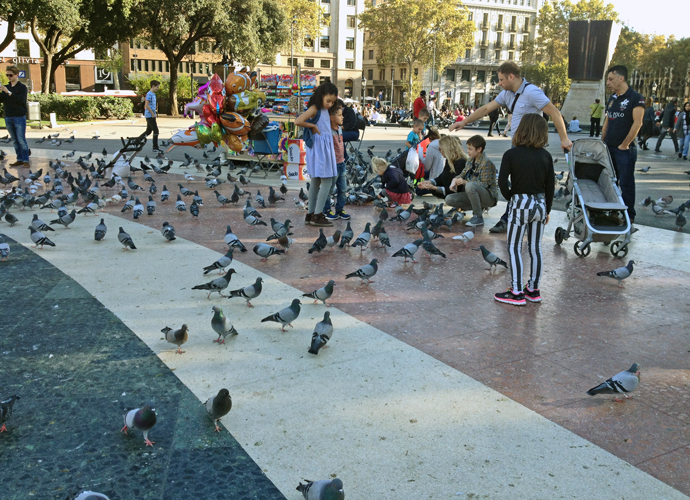 |
| The
Placa Catalunya is located at the northern end of la Rambla. It is the
focal point of pedestrian, metro station, bus and car traffic. |
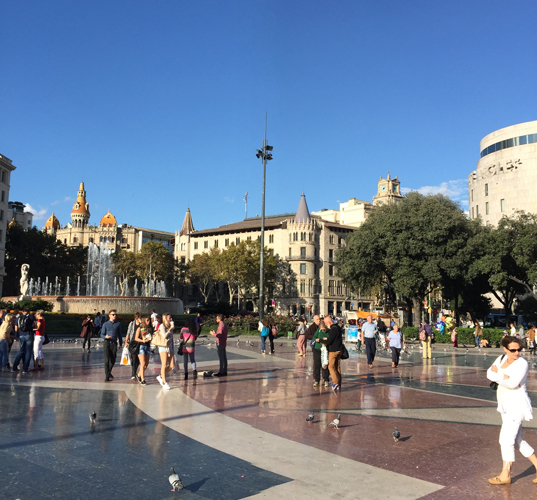 |
| One of a pair of fountains that lie next to the big circlular plaza. |
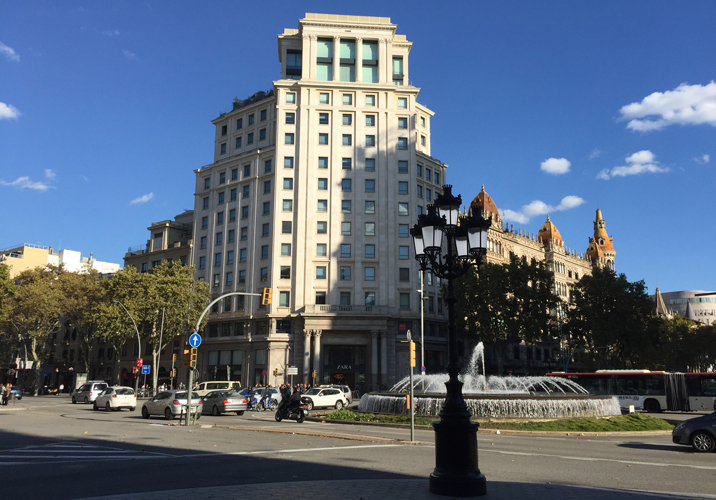 |
| Fountain in Placa Catalunya. |
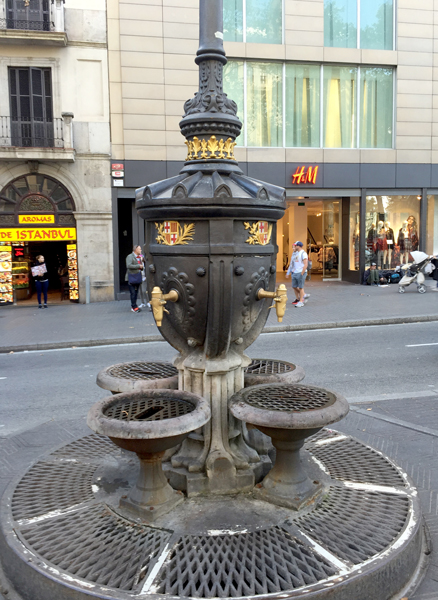 |
| If
you drink the water from the La Rambla drinking fountain (called the
"Font de Canaletes" in Catalan), folklore says that you will fall in
love with Barcelona and always return to the city. |
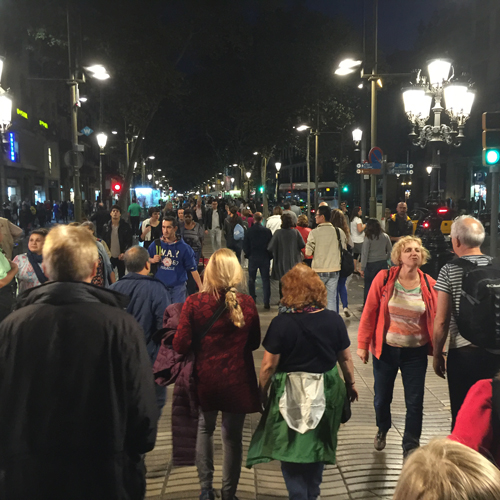 |
| Nightime on la Rambla. |
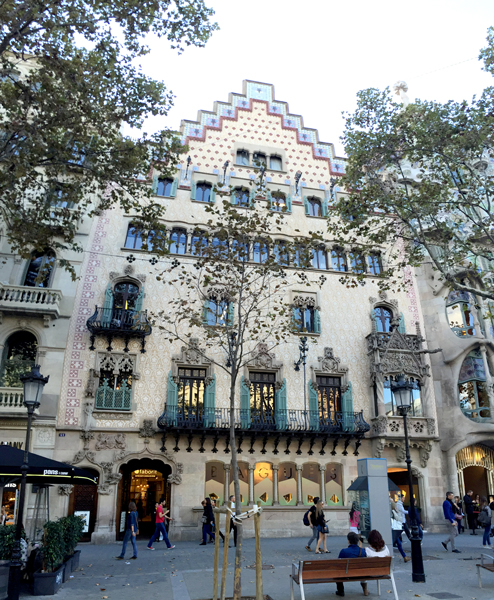 |
| On
the Passeig de Gracia, in the Eixample district north from Placa
Catalunya, there is a row of interesting houses, including this one by one designed by Puig i Cadafalch. |
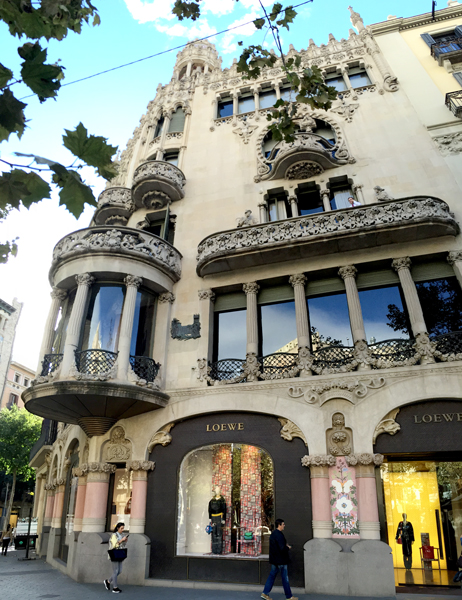 |
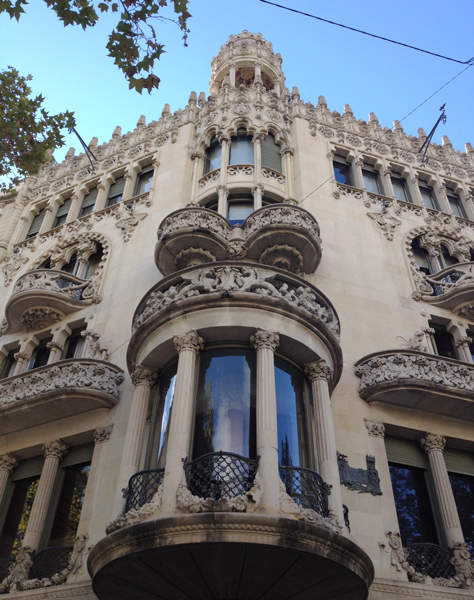 |
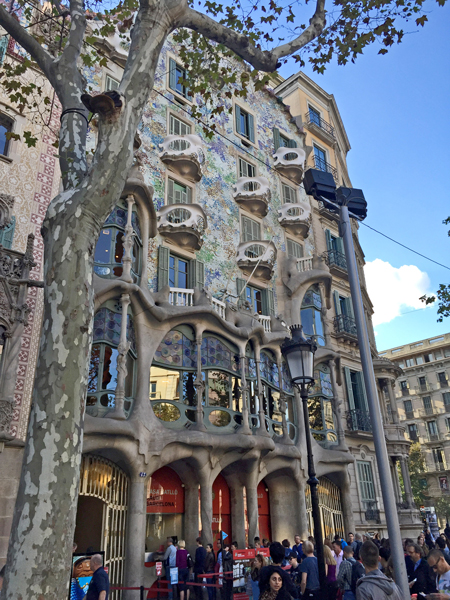 |
| Casa Batlló, by Gaudi. |
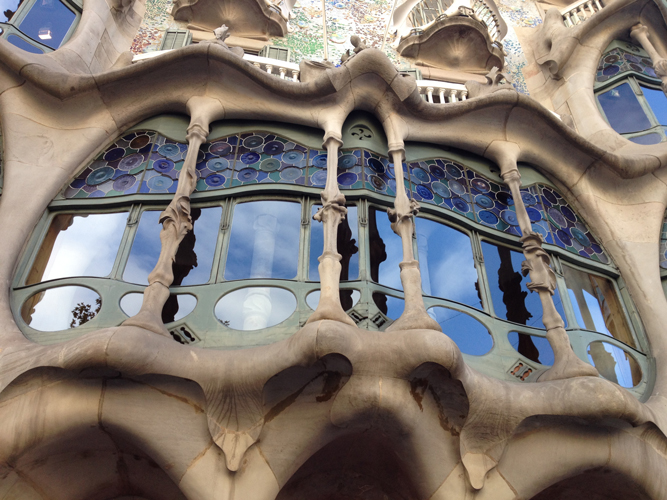 |
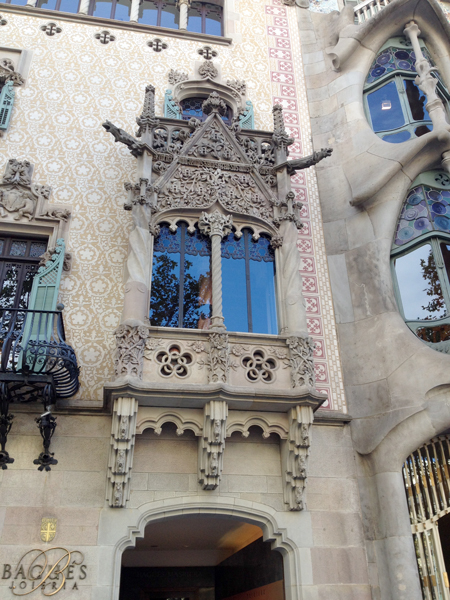 |
| Casa Amatller, at No 41 Passeig de Gràcia, was designed by Puig i Cadafalch. |
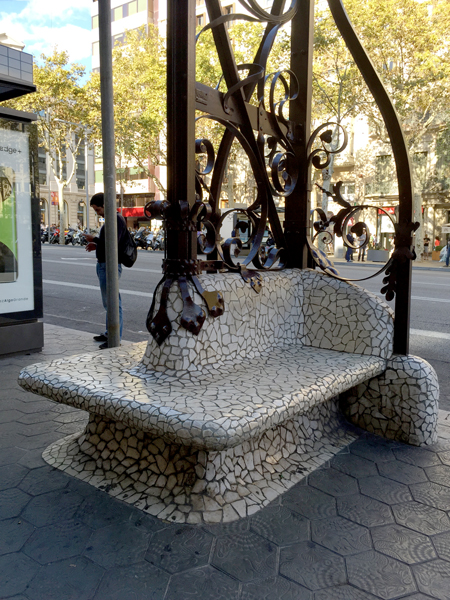
|
| A
pedestrian bench near a bus stop on Passeig de Gracia, finished in the
broken tile surface pioneered by Gaudi's Modernista movement. |
Following la Rambla to its southern end, you come to the Placa del Portal de la Pau, where there is a 60-meter tall
monument dedicated to Christopher Columbus that was built for the 1888 World Exposition.
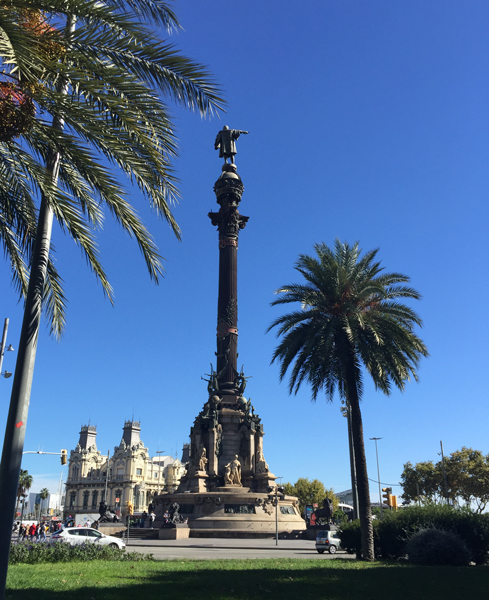 | 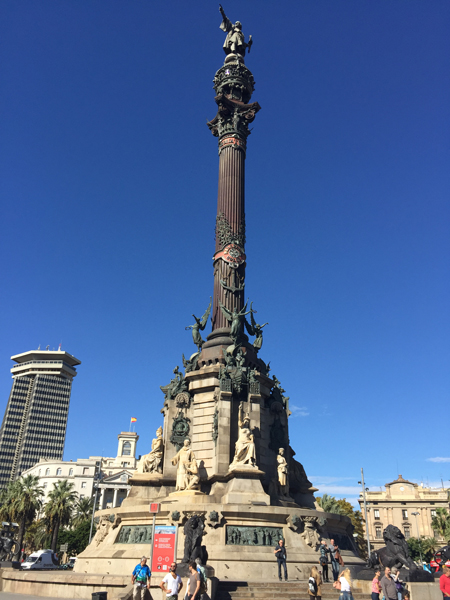 |
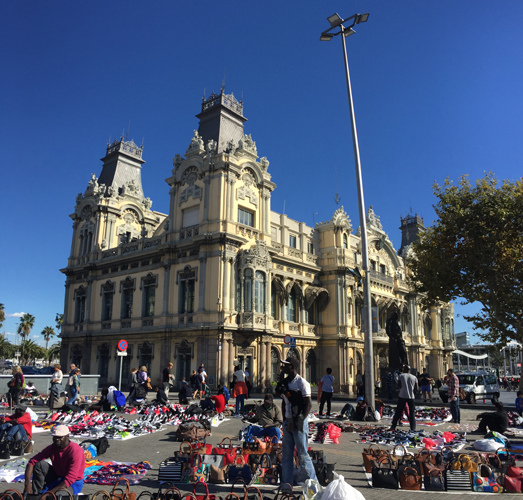 |
| There is a thriving street market around the Port of Barcelona building - every kind of item you might want. |
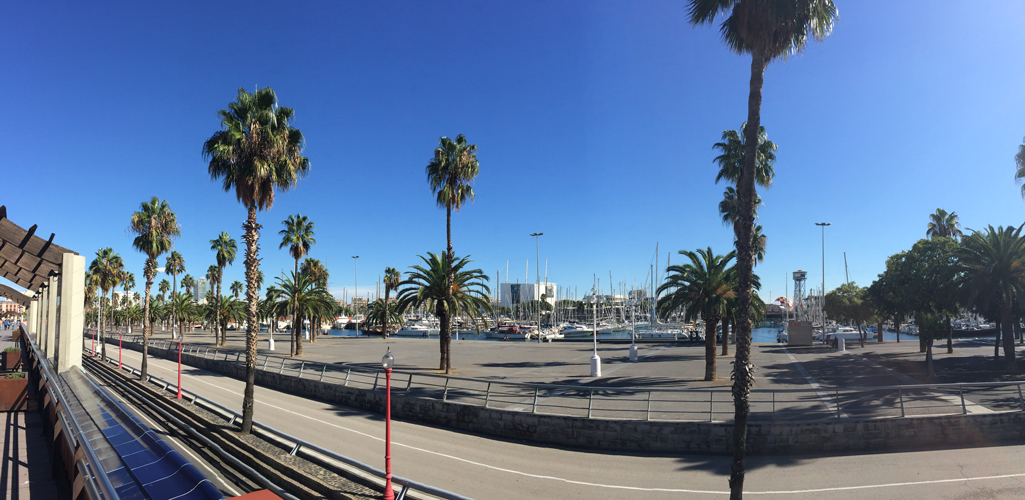 |
| Walking
along the waterfront on Passeig de Colom, marina in the
background. Said to be near the docking area for Columbus' ships
in the 15th century. |
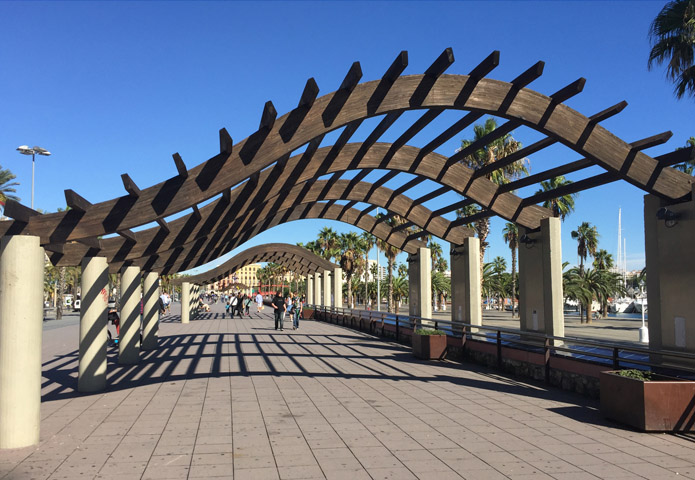 |
| A series of graceful wooden arcs line the Passeig de Colom. |
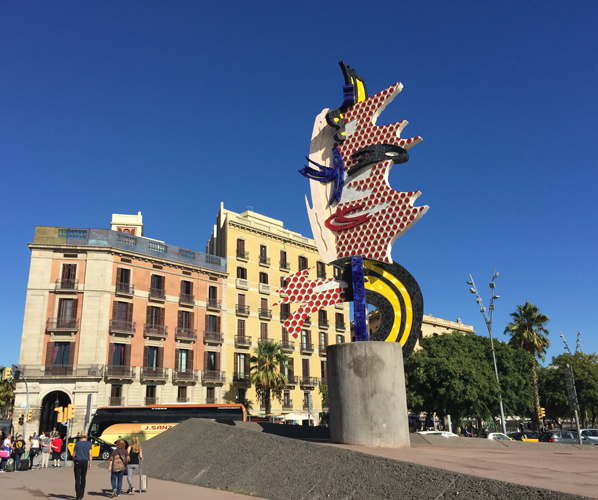 |
| Cap de Barcelona (Barcelona's Head) designed by Roy Lichtenstein and constructed by sculptor Diego Delgado Rajado in 1992. |
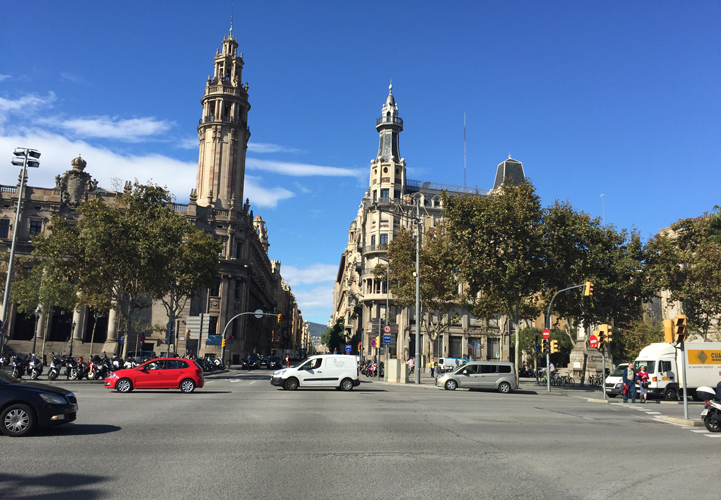 |
| Looking across Passeig de Colom. |
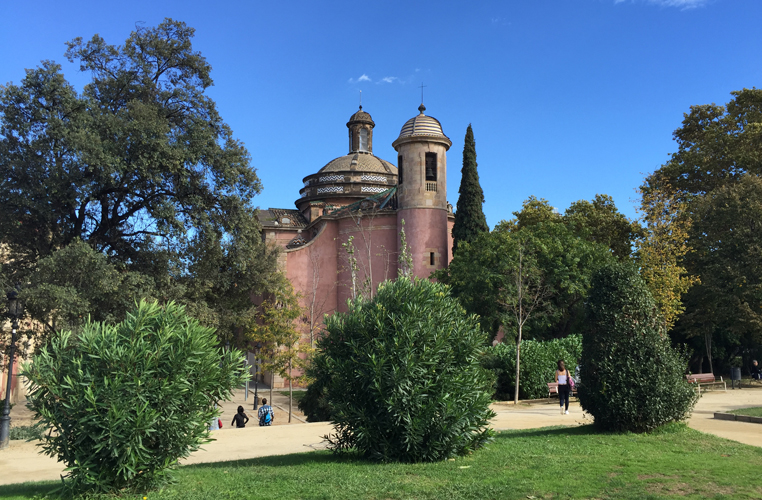 |
| After leaving Passeig de Colom, heading east to Parc de la Ciutadella. This is the military parish church Parroquia Castrense de Placa Parc de la Ciutadella. |
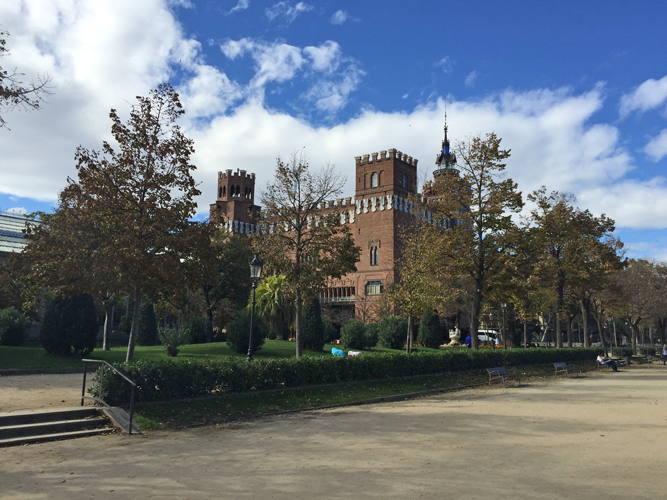 |
| Located at the south end of Passeig de Luís Companys, this
building was designed as a
café-restaurant for the Universal Exposition of 1888. After the event,
the “Castell dels Tres Dragons” (Castle of the Three Dragons), named
after a novel by Serafí Pitarra, had various uses
associated with the world of zoology before becoming the current
Laboratory of Nature. It was constructed in brick and sheet iron and is
considered to be one of the finest of all Modernist buildings.
|
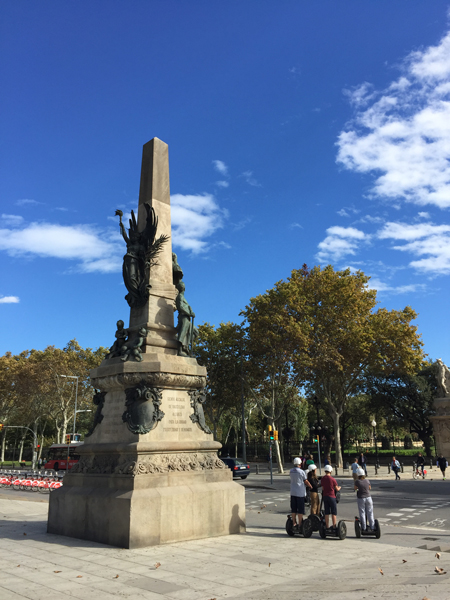 |
| Walking north on Passeig Luis Companys. |
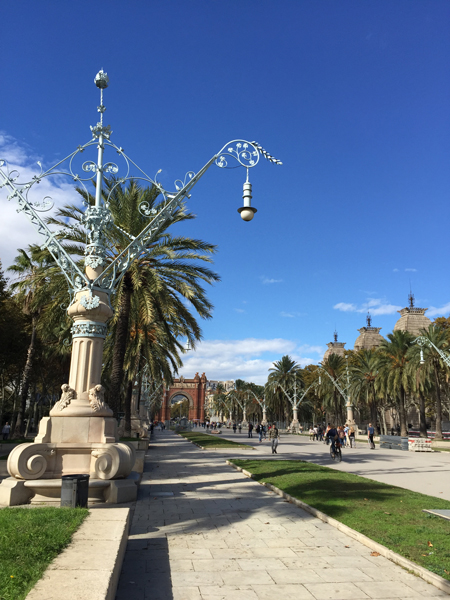 |
| Even the lamp posts in Barcelona are art. |
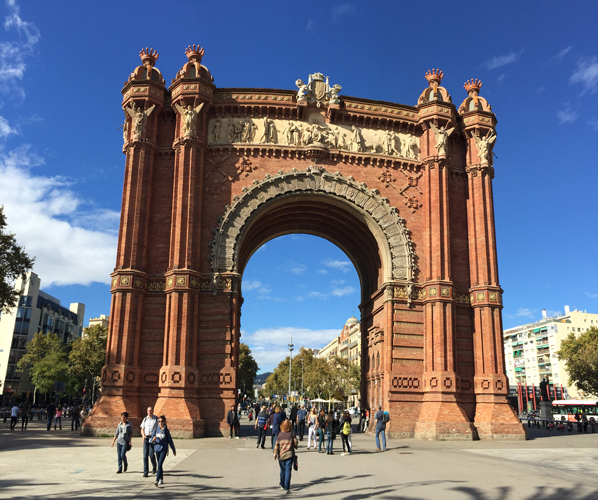 |
| The Arc de Triomf, at the north end of Pg. Companys. |
Ciutat Vella and the Gothic Quarter
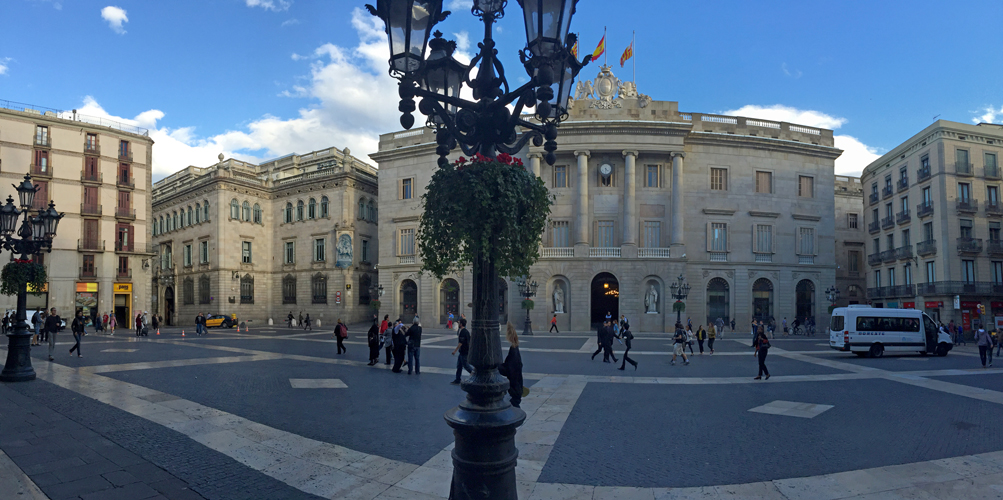 |
| Plaça de Sant Jaume, Ajuntament de Barcelona - City Hall. |
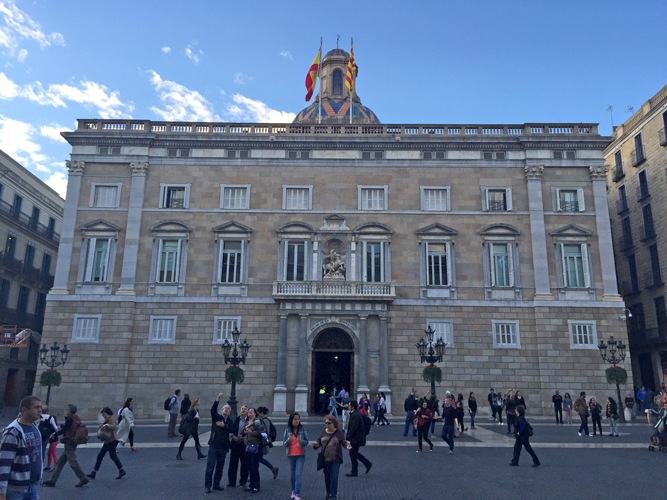 |
| On the other side of Placa de Sant Jaume is the local seat of the Catalan government - Palau de la Generalitat de Catalunya. |
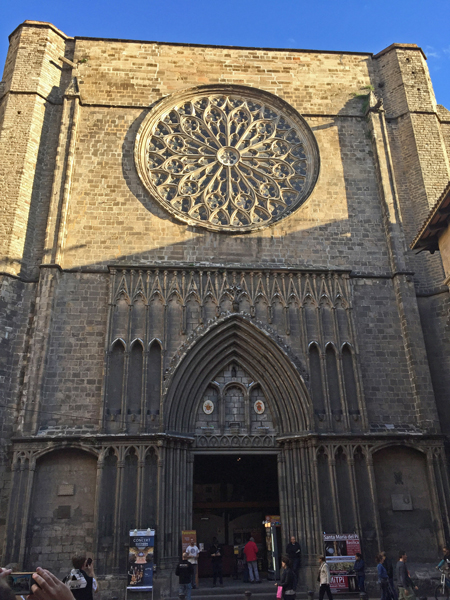 |
| Basilica de Santa Maria del Pi. |
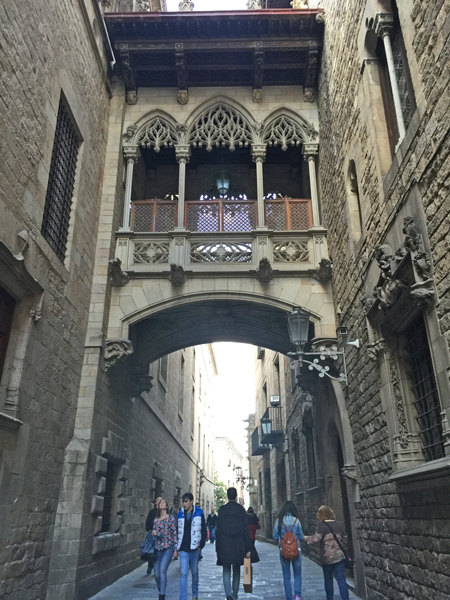 |
| Neogothic Bishop's Bridge, Gothic Quarter. |
Barcelona Cathedral
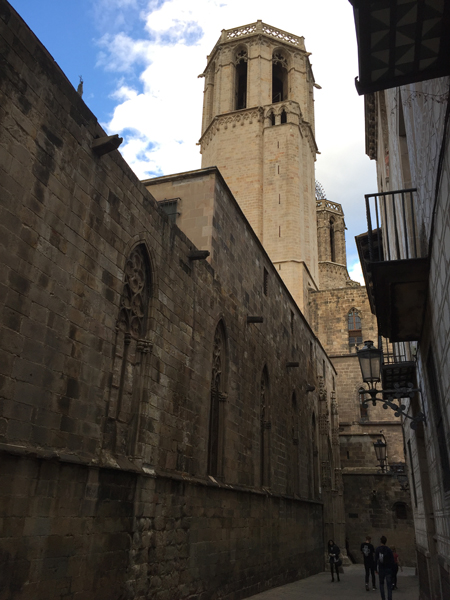 |
| Bell Tower with stair turret. |
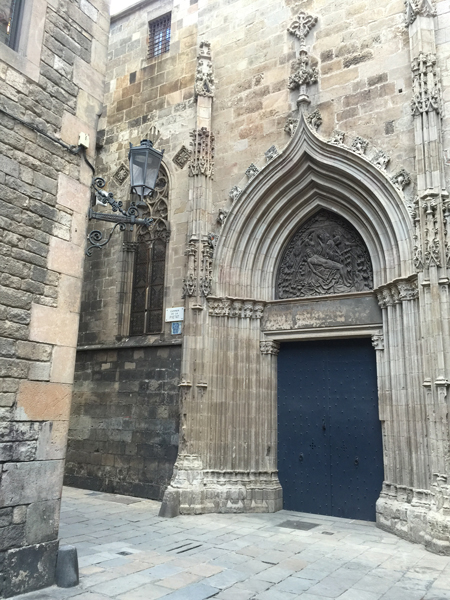 |
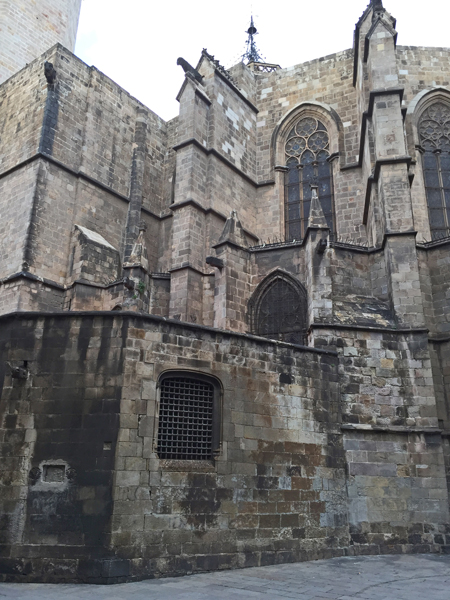 |
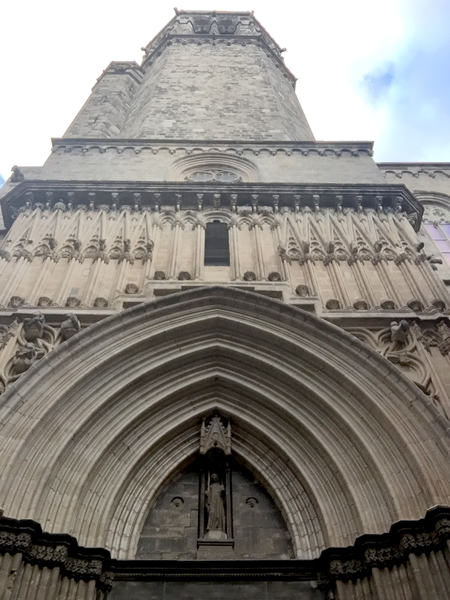 |
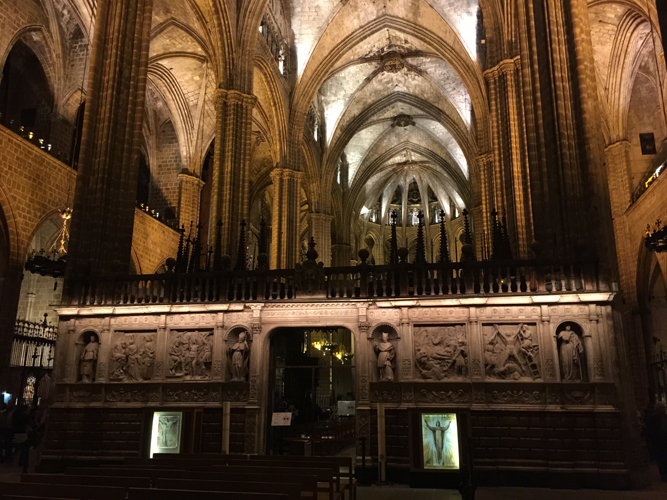 |
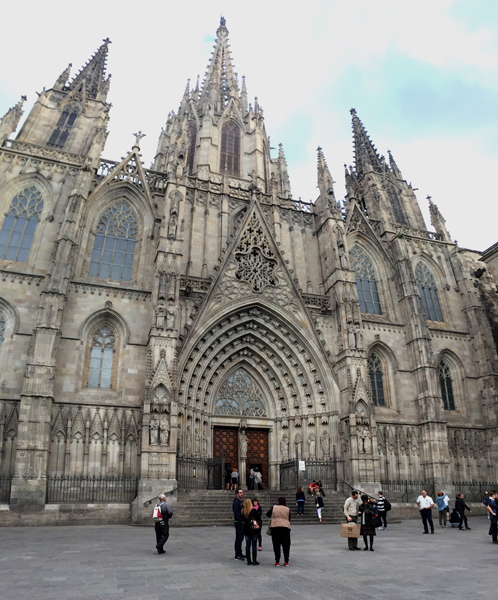 |
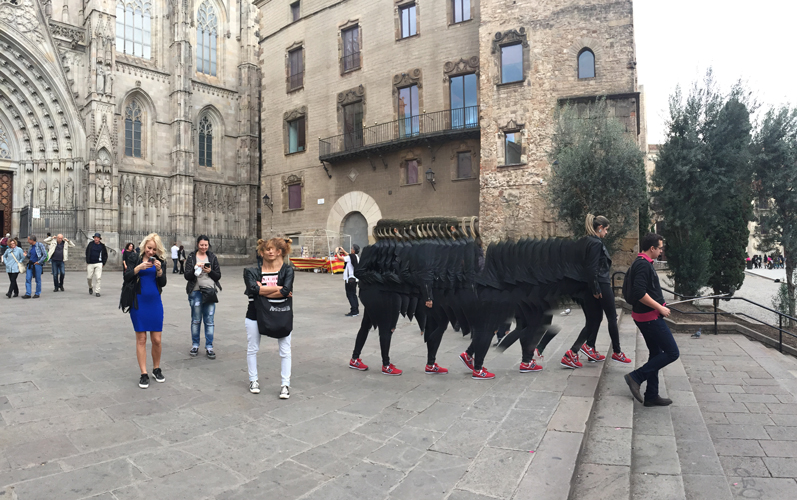 |
| Wha'... ? |
Santa Maria del Mar
Construction work started on 25 March 1329, when the foundation stone was laid by king Alfonso IV of Aragon (III of Catalonia.)
The walls, the side chapels and the façades were finished by 1350. In 1379 there was a fire that damaged important parts of the works.
Finally, on 3 November 1383 the last stone was laid and on 15 August 1384 the church was consecrated. In 1428 an earthquake
caused several casualties and destroyed the rose window in the west end. The new window, in the Flamboyant style, was finished by 1459.
There have been several modern improvements and reconstructions.
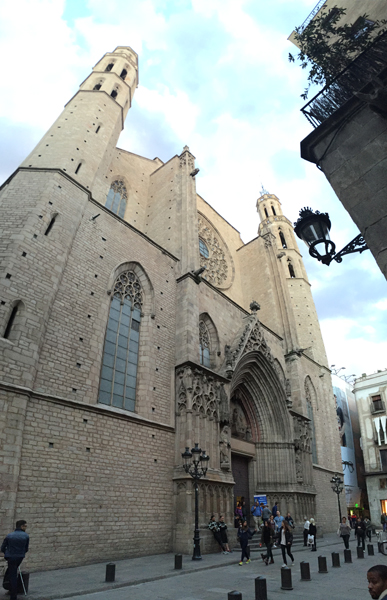 |
| Portal. |
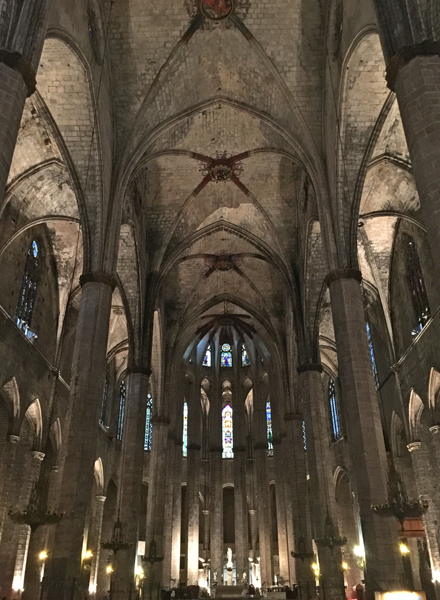 | 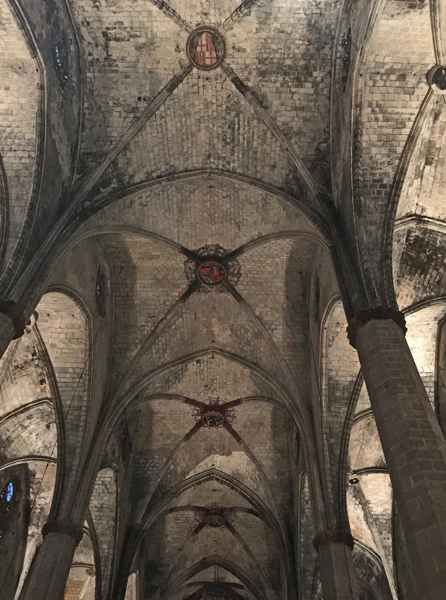 |
Out for tapas and cena in the Gothic Quarter
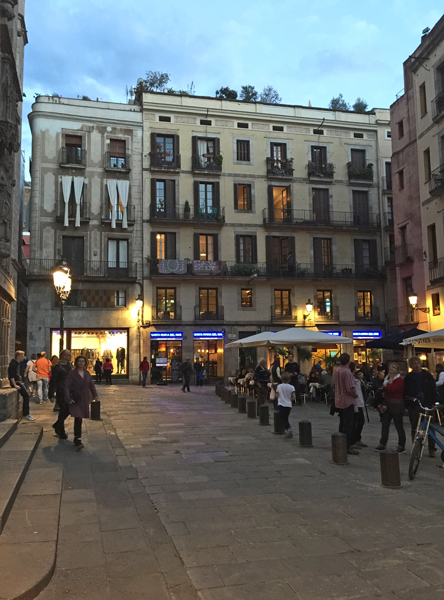 |
| Outdoor dining scene on a nice evening. |
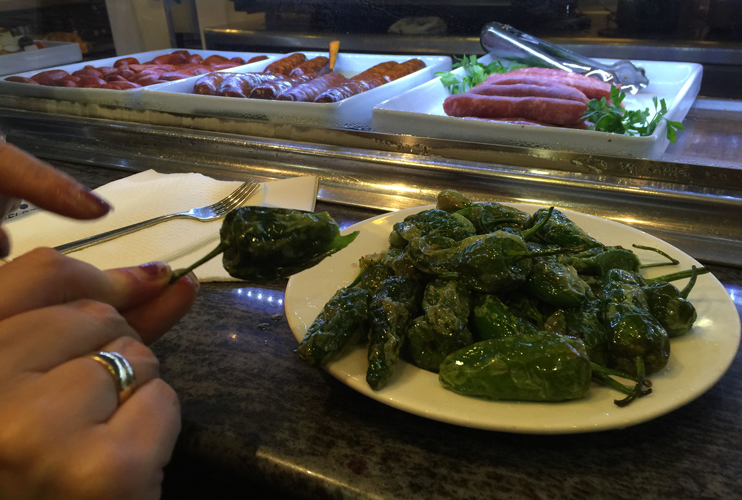 |
| Padron peppers. Fried, lightly salted. Great with beer. |
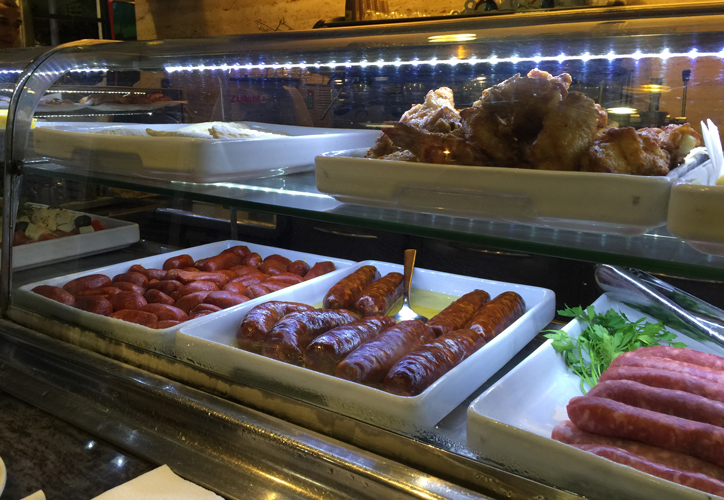 |
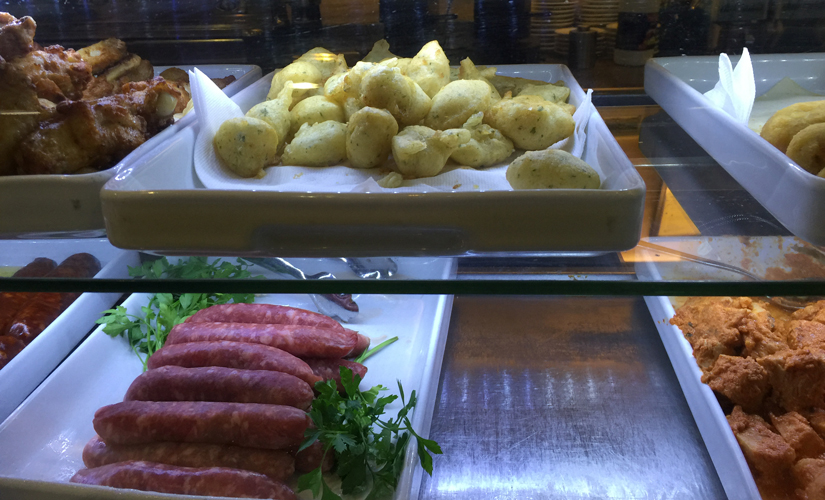 |
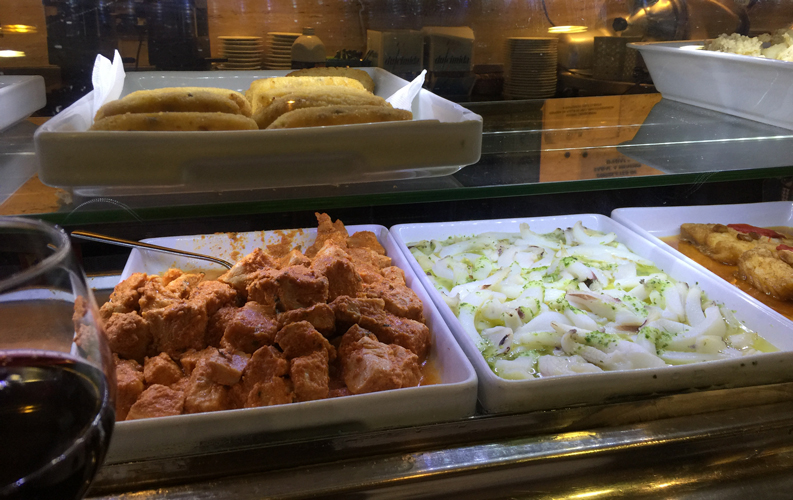 |
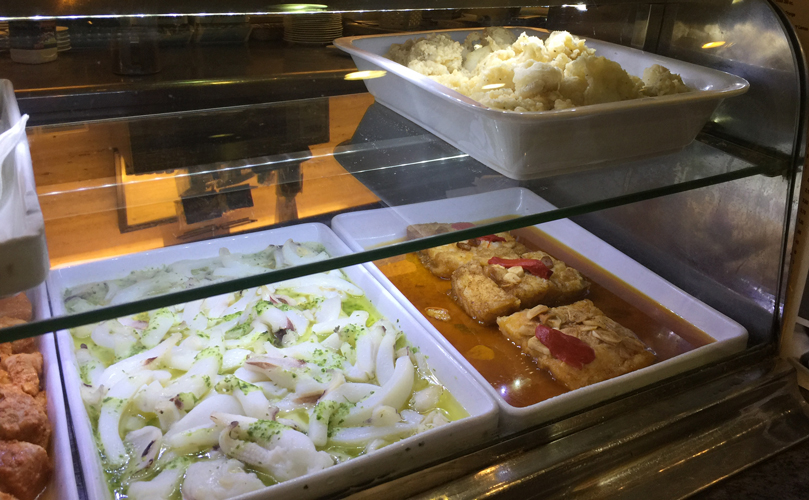 |
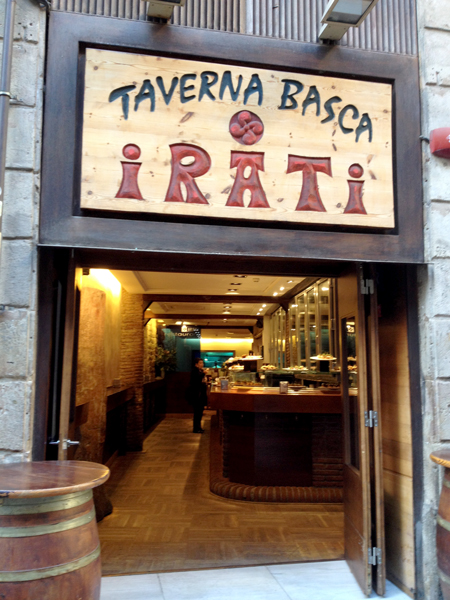 |
| We found several nice Basque places. |
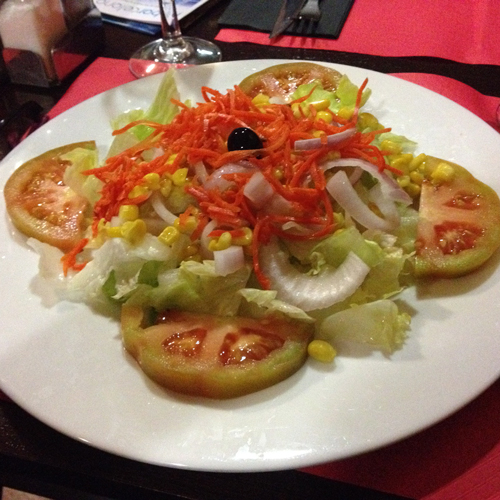 |
| A round of dishes for a cena... |
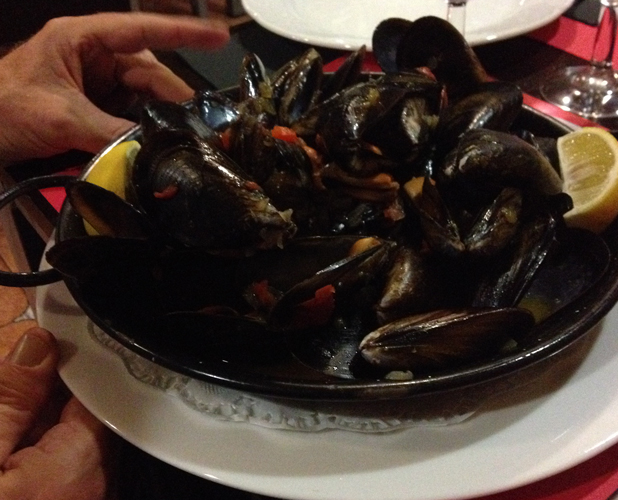 |
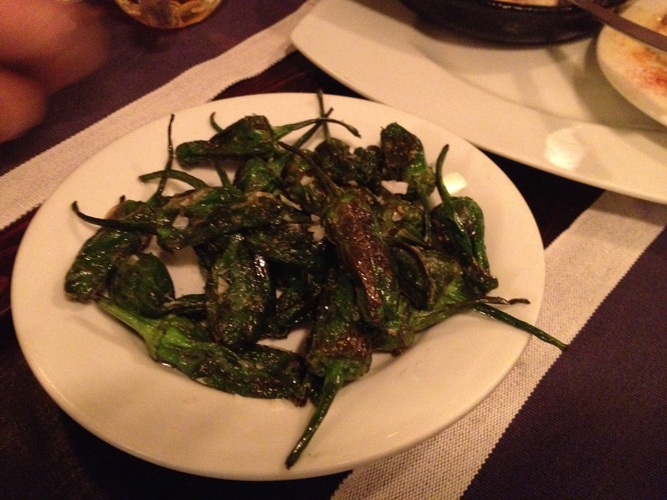 |
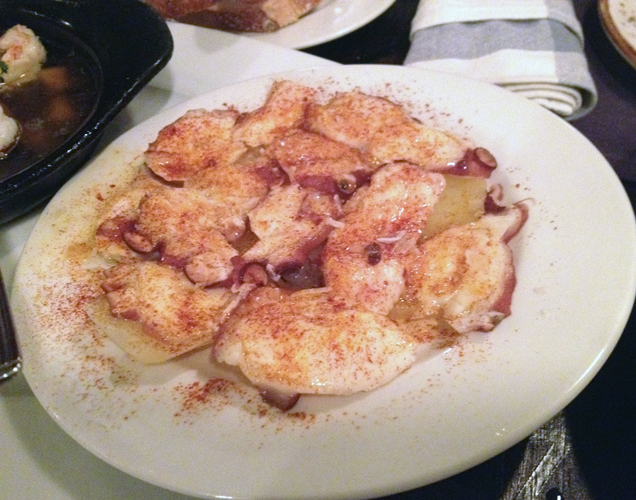 |
| Octopus. |
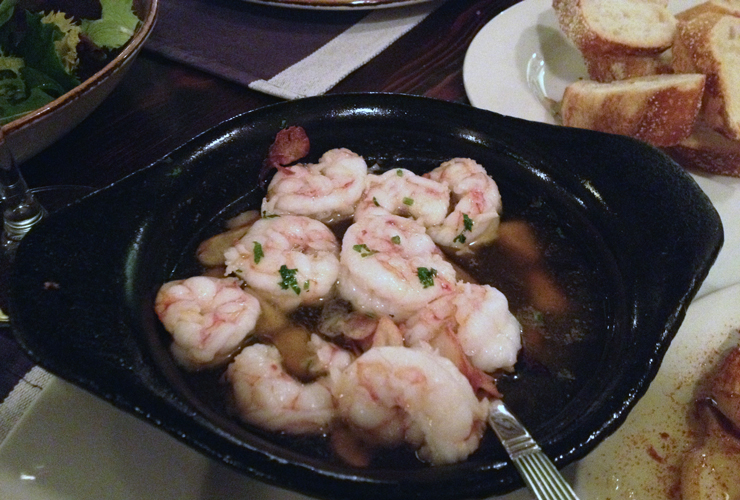 |
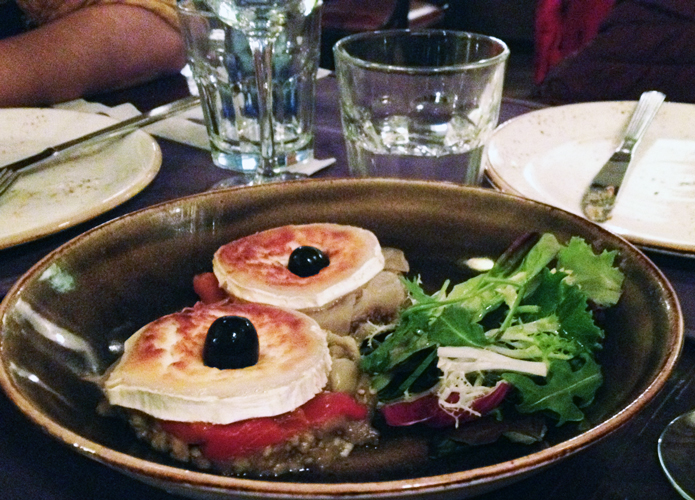 |
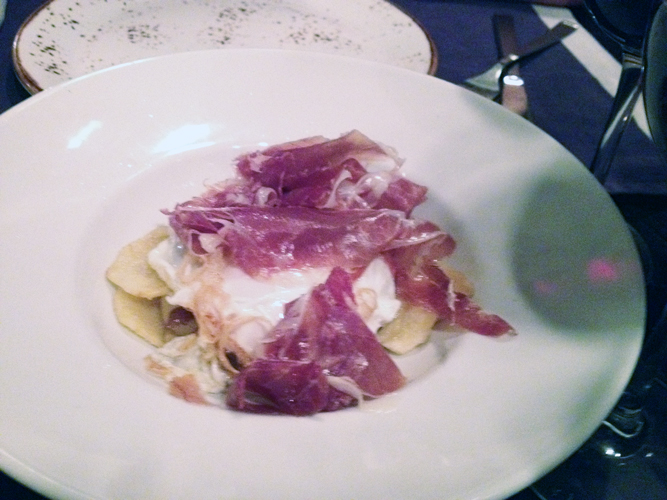 |
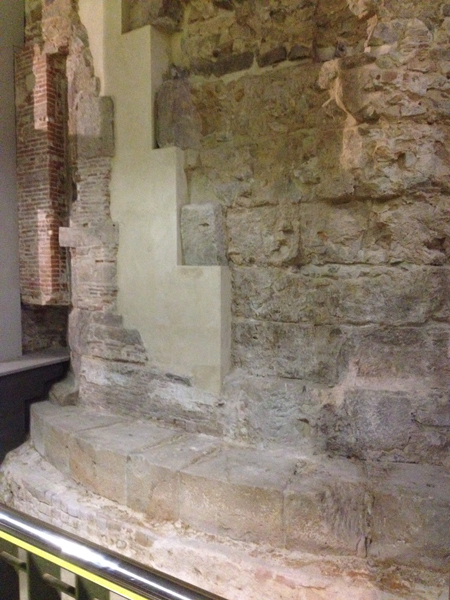 |
| Old Roman walls uncovered during renovation in the Gothic Quarter. |
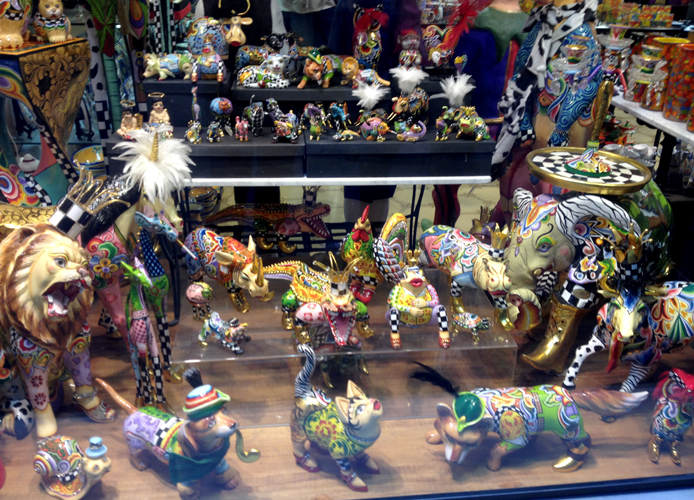 |
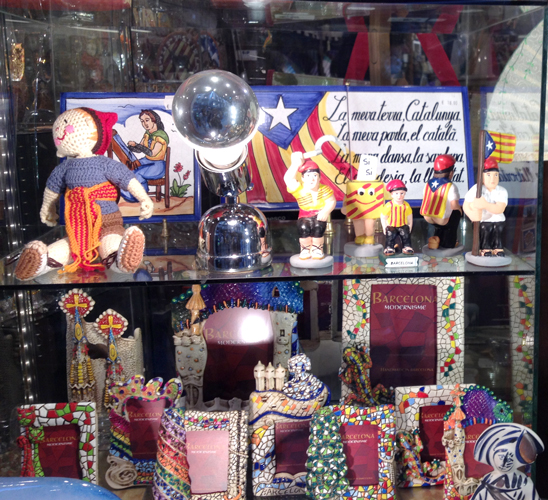 |
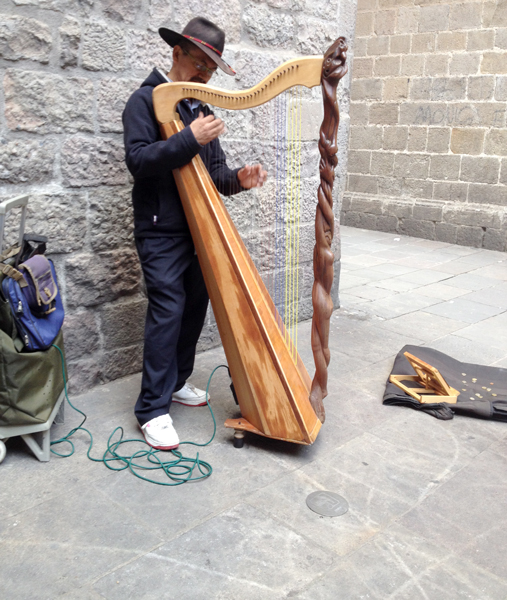 |
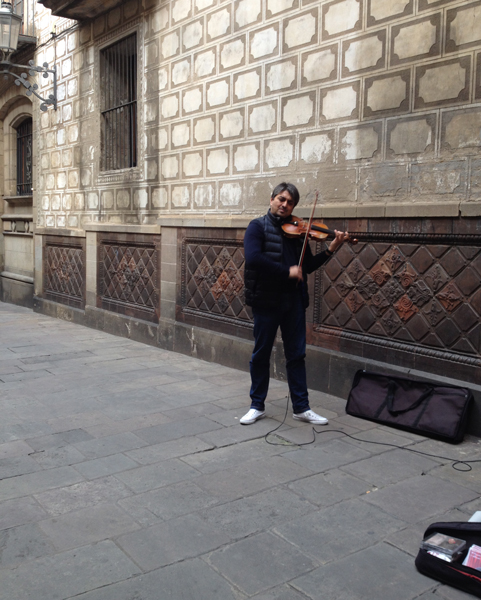 |
Waiting to Sail Home
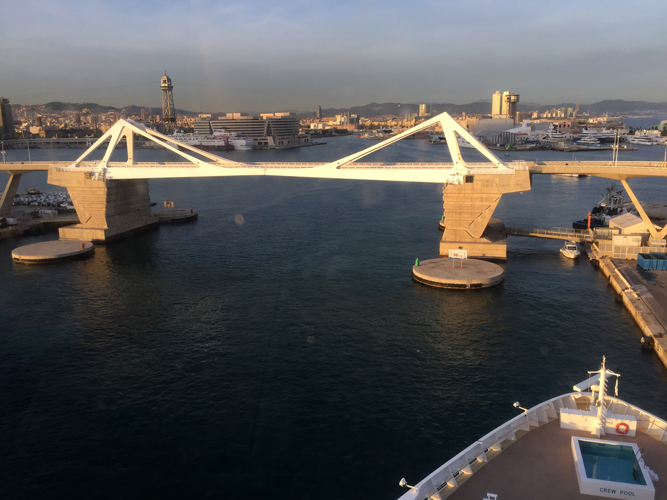 |
| Barcelona from the port. |
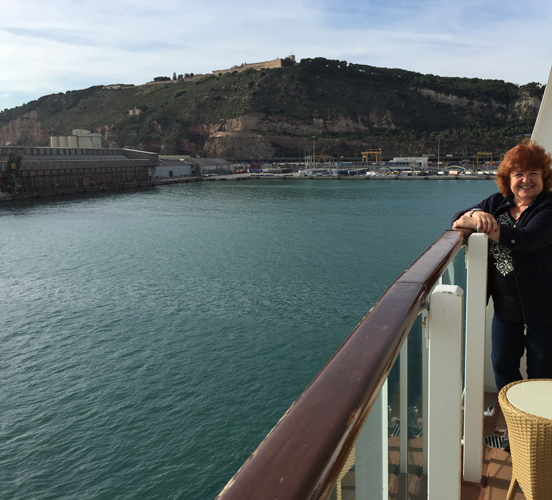 |
| Waiting to set sail in Barcelona. |
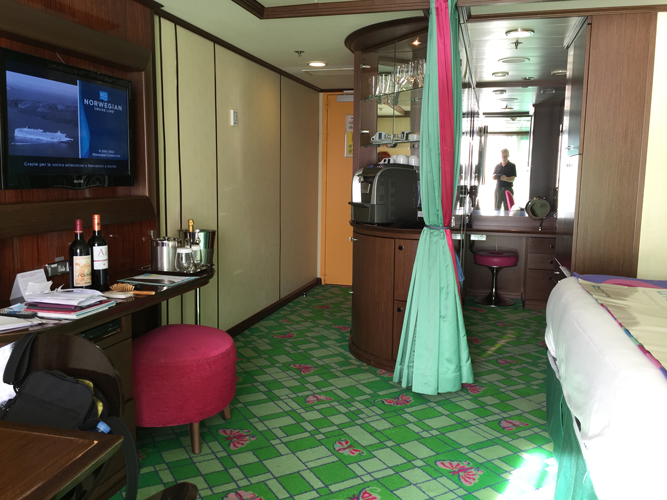 |
| Our cabin for the 16-day voyage. |
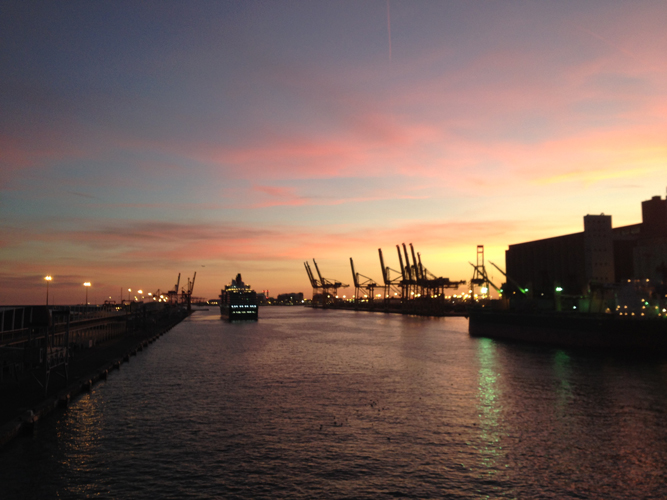 |
| Steaming out of Port of Barcelona. Another ship just ahead of us. |
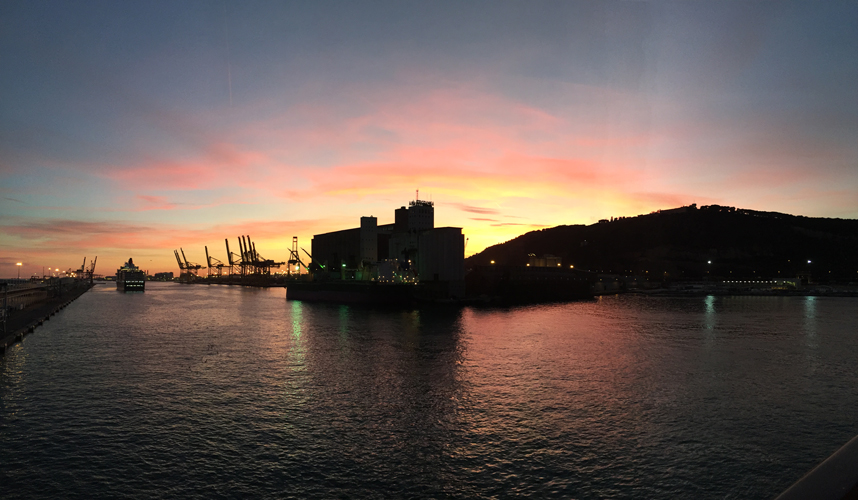 |
| Sunset just before leaving Barcelona. |
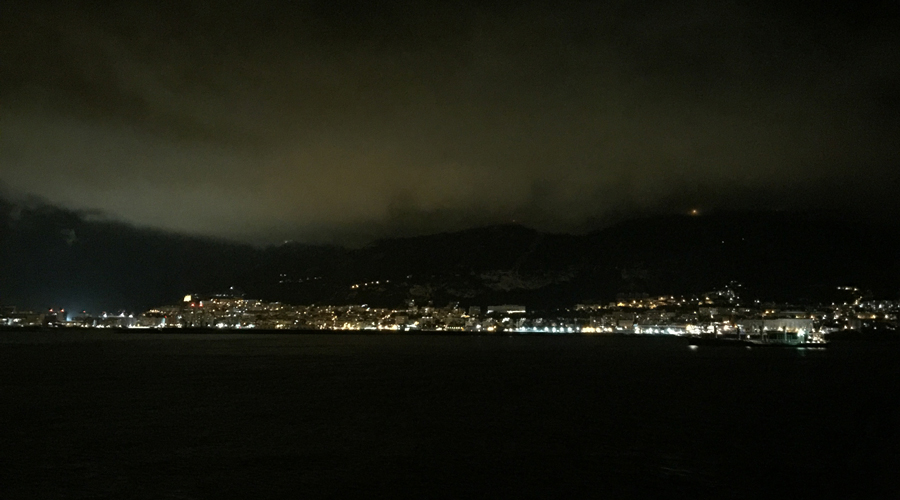 |
| Passing by Tangiers heading for the Strait of Gibraltar. |
Back to Europe 2015
Park Güell
Basilica de la Sagrada Familia